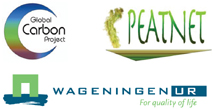Meeting the challenge of mapping peatlands with remotely sensed data
Abstract. Boreal peatlands play a major role in carbon and water cycling and other global environmental processes but understanding this role is constrained by inconsistent representation of peatlands on, or omission from, many global land cover maps. The comparison of several widely used global and continental-scale databases on peatland distribution with a detailed map for the St. Petersburg region of Russia showed significant under-reporting of peatland area, or even total omission. Analysis of the spatial agreement and disagreement with the detailed regional map indicated that the error of comission (overestimation) was significantly lower than the error of omission (underestimation) which means, that overall, peatlands were correctly classified as such in coarse resolution datasets but a large proportion (74–99%) was overlooked. The coarse map resolution alone caused significant omission of peatlands in the study region. In comparison to categorical maps, continuous field mapping approach utilizing MODIS sensor data showed potential for a greatly improved representation of peatlands on coarse resolution maps. Analysis of spectral signatures of peatlands with different types of surface vegetation suggested that improved mapping of boreal peatlands on categorical maps is feasible. The lower reflectance of treeless peatlands in the near- and shortwave-infrared parts of the electromagnetic spectrum is consistent with the spectral signature of sphagnum mosses. However, when trees are present, the canopy architecture appears to be more important in defining the overall spectral reflectance of peatlands. A research focus on developing remote sensing methods for boreal peatlands is needed for adequate characterization of their global distribution.






